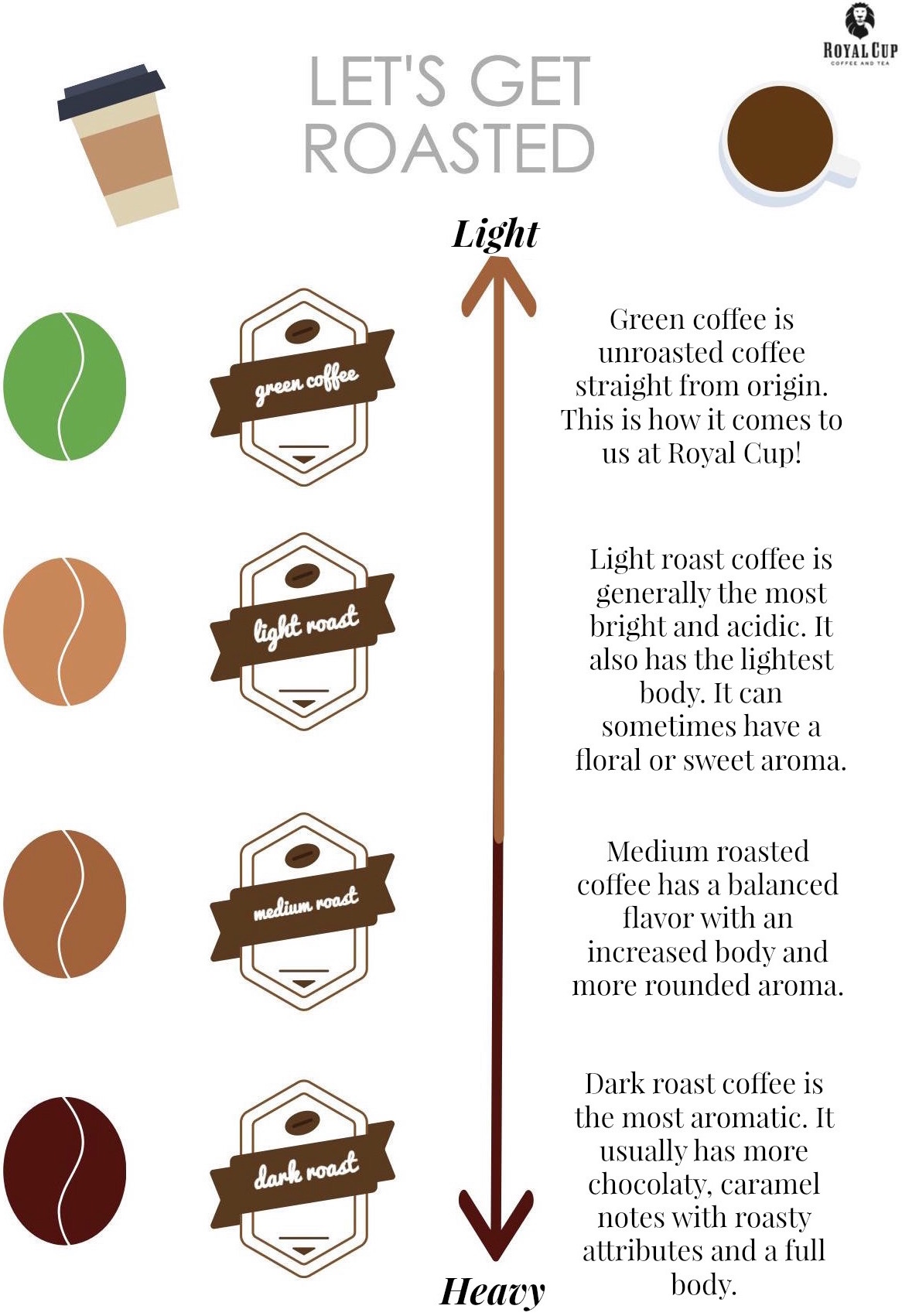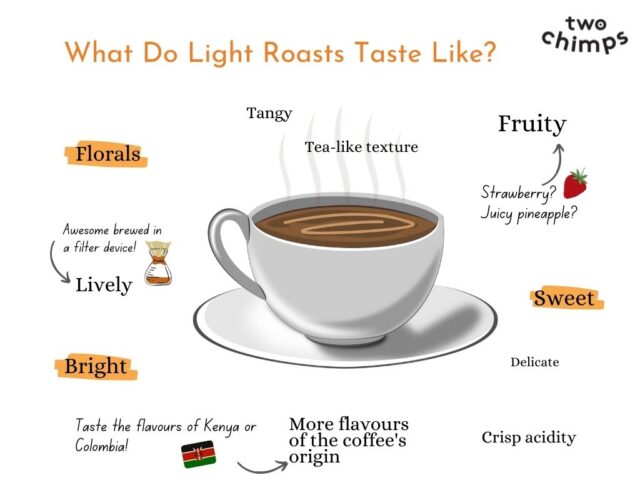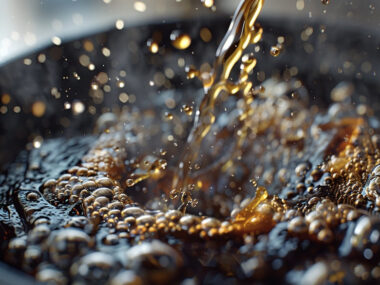When you hear the term “light roast coffee,” what comes to mind? Perhaps you picture a bright, flavorful cup that awakens your senses.
If you’ve ever wondered about the distinct taste of light roast coffee, you’re not alone. Understanding its unique flavor profile can transform your coffee experience, making each sip more enjoyable and satisfying. Imagine the first taste of your morning brew revealing layers of flavor you never knew existed.
Light roast coffee offers a vibrant and diverse taste that’s often overlooked. It’s not just about the caffeine boost; it’s about savoring the subtle nuances that make each cup special. As you read on, you’ll discover why light roast coffee might be your new favorite choice, and how it can elevate your daily coffee ritual. Prepare to uncover the secrets behind its taste and learn how to appreciate the delicate notes that define this roast. Get ready to transform your coffee experience forever.

Credit: www.royalcupcoffee.com
Characteristics Of Light Roast Coffee
Light roast coffee offers a unique experience for coffee lovers. Its characteristics are distinct, setting it apart from darker roasts. This roast emphasizes the original bean qualities, bringing out subtle nuances that are often overshadowed in darker roasts.
Color And Appearance
Light roast coffee has a pale color. The beans appear tan or light brown. This roast lacks the oily sheen seen in darker roasts. The beans are dry and light.
Aroma Profile
The aroma of light roast coffee is fresh and vibrant. It often has floral or fruity scents. These aromas are gentle, not overpowering. They invite you to explore the coffee’s complexity.
Flavor Notes
Light roast coffee offers delicate flavors. It often has hints of fruit or floral notes. You might taste citrus or berries. These flavors are clean and crisp. The coffee has a bright acidity, adding to its refreshing taste.
Flavor Profile Exploration
Light roast coffee is a delightful journey of flavors waiting to be discovered. If you’re curious about what makes this roast unique, you’re in for a treat. Let’s dive into its flavor profile and see what makes your morning cup so intriguing and refreshing.
Fruity And Floral Notes
Light roast coffee often surprises with its fruity and floral notes. These flavors are more pronounced because the beans are roasted for a shorter time, preserving their natural qualities. Imagine the subtle sweetness of a ripe apple or the delicate aroma of jasmine in your cup.
Have you ever sipped coffee and detected a hint of fruitiness? That’s the magic of light roast. These flavors can vary from coffee to coffee, offering a unique experience each time. Next time, pay close attention and see if you can identify these delightful notes.
Citrus And Berry Undertones
One of the standout characteristics of light roast coffee is its citrus and berry undertones. This is where you’ll find flavors reminiscent of lemons, oranges, or even a hint of blueberries. These undertones add a refreshing zing to your coffee, making it vibrant and lively.
Think about the last time you enjoyed a summer fruit salad. The brightness of citrus and berries in light roast coffee can evoke a similar sensation. It’s like having a burst of freshness with every sip.
Bright Acidity
Bright acidity is a hallmark of light roast coffee. This doesn’t mean the coffee is sour, but rather it has a lively, crisp quality. This acidity can make the coffee feel light and clean on your palate, similar to a refreshing lemonade on a hot day.
Have you noticed how some coffees leave a lingering, pleasant tang? That’s the bright acidity at work. It’s a feature that can make your morning brew feel invigorating and energizing. How does this brightness change your coffee-drinking experience?
As you explore these flavor profiles, you might find new favorites or rediscover old ones. Light roast coffee offers a world of taste that is both subtle and complex, waiting for you to enjoy. Next time you sip, let these flavors guide you and enhance your coffee journey.
Comparing Light Roast To Other Roasts
Understanding coffee roasts opens up a world of flavor. Light roast coffee stands out with its unique taste. It offers a different experience compared to medium and dark roasts. These differences are worth exploring for every coffee lover.
Light Vs. Medium Roast
Light roast coffee keeps the natural flavors of the beans. It has a brighter, more acidic taste. You can often detect floral or fruity notes. Medium roast coffee mellows these characteristics. It offers a balanced flavor profile. The sweetness and body are enhanced, creating a smoother taste. Medium roast is less acidic than light roast. It has a more uniform flavor.
Light Vs. Dark Roast
Dark roast coffee transforms the bean’s original flavors. It introduces a bold, robust taste. The flavors are deeper and more pronounced. You might notice chocolate or smoky notes. Light roast coffee, in contrast, preserves the bean’s origin. It highlights the bean’s unique characteristics. Light roast is more acidic than dark roast. It offers a cleaner taste, focusing on the bean’s intrinsic qualities.
Brewing Methods For Light Roast
Light roast coffee offers a bright, fruity taste with subtle floral notes. The delicate flavors come from its lighter roasting process. Perfect for those who enjoy a crisp and refreshing cup.
Brewing a light roast coffee is a delightful journey for your taste buds, offering a spectrum of flavors that can be enhanced by the right brewing methods. Each method brings out unique characteristics, allowing you to savor the subtle notes and vibrant acidity that light roast is known for. Whether you prefer the precision of a pour-over or the richness of an espresso, understanding these techniques can elevate your coffee experience.
Pour-over Techniques
The pour-over method can highlight the bright and fruity notes of a light roast. Start by using a medium-coarse grind, which resembles sea salt in texture. This allows water to pass through evenly, extracting just the right amount of flavor. Water temperature is crucial. Aim for about 195°F to 205°F (90°C to 96°C) to avoid bitterness and bring out the coffee’s natural sweetness. As you pour, use a circular motion to ensure all grounds are evenly saturated. Experiment with different pouring speeds. A slower pour can accentuate floral notes, while a quicker pour might emphasize citrus flavors. Which flavor profile do you prefer?
French Press Considerations
The French press offers a fuller-bodied brew, even with a light roast. Use a coarse grind to prevent excessive sediment in your cup. This method allows you to taste the coffee’s natural oils, enhancing the overall richness. Steep your coffee for about four minutes. Any longer, and you risk over-extraction, which can lead to a bitter taste. After pressing, serve immediately to capture the vibrant flavors before they settle. Are you a fan of a robust cup? Consider adjusting the ratio of coffee to water. More coffee can increase strength without sacrificing the delicate notes of your light roast.
Espresso Variations
Espresso might seem like an unlikely choice for a light roast, but it can yield surprising results. The concentrated brew can bring out intense fruit and floral notes. Use a fine grind and a short extraction time to avoid bitterness. Try experimenting with different extraction times. A slightly longer pull can bring out sweetness, while a shorter pull might highlight acidity. How do these variations affect your enjoyment of the espresso? Light roast espresso pairs well with milk-based drinks too. The milk can soften the acidity, creating a balanced and creamy beverage. Next time, try making a latte with your light roast espresso and notice the difference in taste. By exploring these brewing methods, you can uncover new dimensions in your light roast coffee. Which method will you try first?
Pairing Light Roast Coffee
Light roast coffee offers bright, tangy flavors with a hint of sweetness. Its unique profile makes it perfect for pairing with various foods. The right combinations can enhance your coffee experience. Enjoy every sip and bite together.
Best Food Pairings
Light roast coffee pairs well with sweet pastries. Croissants and muffins complement its fruity notes. Try it with fresh fruits like berries or citrus. The natural sweetness balances the coffee’s acidity. A yogurt parfait with granola also works well. It’s a delicious and healthy choice.
Enhancing The Flavor Experience
Experiment with pairing light roast coffee with different foods. Consider adding a touch of milk or cream. This can mellow the acidity, making it smoother. A sprinkle of cinnamon or nutmeg adds warmth. These spices highlight the coffee’s nuanced flavors. Don’t shy away from trying new combinations. Each pairing offers a unique taste journey.

Credit: twochimpscoffee.com
Choosing The Right Beans
Light roast coffee offers a bright, fruity taste with a hint of floral notes. Its flavors are mild and delicate, highlighting the bean’s original characteristics. Enjoy a smooth, clean finish with less bitterness.
Choosing the Right Beans Finding the perfect light roast coffee can feel like a treasure hunt. With so many options, it’s easy to feel overwhelmed. But fear not—choosing the right beans is simpler than you think. The key is to understand what each type of bean offers. Some beans bring out fruity notes, while others highlight floral aromas. Knowing your preferences helps you make an informed choice. Remember the time you discovered a new dish that instantly became your favorite? Light roast coffee can offer that same excitement. You’re just one choice away from your next favorite cup.
Single Origin Options
Single origin beans come from a specific region or country. They give you a pure taste of their origin’s unique flavor profile. Imagine sipping a cup with hints of citrus from Ethiopia or enjoying floral notes from a Colombian coffee. These beans often have a story to tell. They reflect the climate, soil, and culture of their birthplace. When you choose single origin, you’re savoring a piece of that story. Have you ever traveled through taste? Single origin beans offer an adventure in every cup. They invite you to explore the diverse world of coffee from the comfort of your home.
Blend Selections
Blends combine beans from different regions to create a balanced flavor. They aim to offer a harmonious taste that appeals to a wide range of palates. If you enjoy complexity, blends might be your go-to. The art of blending allows roasters to highlight the best characteristics of each bean. Think of it like a symphony, where each instrument contributes to the overall harmony. Do you like surprises in your cup? Blends often deliver unexpected layers of flavor. They’re perfect for those who enjoy a well-rounded, consistent taste. Choosing between single origin and blend selections can be an exciting journey. Which one resonates with your taste preferences? The answer might be in your next sip.

Credit: cambioroasters.com
Frequently Asked Questions
What Is The Flavor Profile Of Light Roast Coffee?
Light roast coffee is known for its bright, fruity flavors. It often has a crisp acidity and a lighter body. The beans retain more of their origin characteristics, showcasing floral or citrus notes. This roast allows the coffee’s natural flavors to shine, offering a nuanced taste experience.
Does Light Roast Coffee Taste Bitter?
Light roast coffee generally has less bitterness compared to darker roasts. The lighter roasting process preserves the beans’ natural acids. This results in a smoother, more delicate flavor. If brewed correctly, light roast coffee can be refreshingly sweet and vibrant, without the harsh bitterness found in darker roasts.
Is Light Roast Coffee Stronger In Caffeine?
Light roast coffee tends to have more caffeine than darker roasts. The lighter roasting process retains more caffeine in the beans. This can result in a slightly stronger caffeine punch. However, the difference in caffeine content is usually minimal, and brewing method also influences caffeine levels.
How Does Brewing Affect Light Roast Flavor?
Brewing method significantly impacts light roast flavor. Methods like pour-over or Aeropress highlight its bright, fruity notes. Using cooler water can preserve delicate flavors. Experimenting with grind size and brew time can enhance or balance acidity. Finding the right method can amplify light roast’s unique taste.
Conclusion
Light roast coffee offers a bright and lively flavor. It’s perfect for those who enjoy a mild taste. The acidity adds a refreshing twist, often with fruity notes. You might notice hints of citrus or berries. The aroma is delicate and sweet.
Each sip feels light and clean. It’s a great choice for a morning boost. Enjoy the subtle complexity that light roast brings. Experience a different side of coffee. Dive into its unique taste profile. Embrace the gentle yet vibrant flavors.
Light roast coffee can be a delightful journey for your taste buds.






